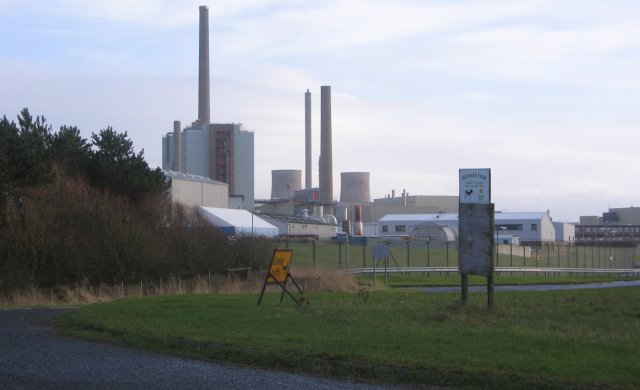Radioactive Waste 381 - Radioactive Effluents From Nuclear Facilities On Coasts Are Blown Back Onto Land By Prevailing Winds
UK Sellafield.jpg

There are a variety of problems involving nuclear power and water. One big issue is the fact that bodies of water are becoming too hot in some cases to be used to cool nearby nuclear reactors. Another problem is simply falling levels of water that are needed for cooling. Major hurricanes that might damage nuclear power plants are a third concern. Today, I am going to address a problem that just came to my attention.
Effluents containing radioactive particles are discharged into the ocean around the world from nuclear power plants, nuclear fuel fabrication facilities and nuclear fuel reprocessing facilities. These radioactive materials can be carried ashore in airborne spray and micro-droplets called marine aerosols. Flooding in such coastal areas would also carry radioactive materials onto the shores. In such places on coasts where the prevailing winds blow onto the shore, the problem is exacerbated.
The U.K. Atomic Energy Agency carried out research on this subject around 1980 in cooperation with the nuclear industry and pro-nuclear groups. They studied the sea to land transfer of five radionuclides including alpha emitters plutonium-238, plutonium-239, plutonium-240, americium-241 and beta emitters cesium-134 and cesium-137. They found that all five of these radionuclides were being carried onto shore by the wind blowing off the ocean.
In winds of less than twenty-two miles per hour, cesium was taken up in spray and marine aerosols and moved onto land. The amount of cesium in the spray and aerosol was about double that of normal ocean spray and aerosols. On the other hand, the level of alpha emitting plutonium and americium in the studied areas were hundreds of times higher than in uncontaminated sea water. These alpha emitters adhered to micro particles of sedimentary and organic materials that are normally suspended in the marine water column. They were ejected into the atmosphere both as aerosols both by bursting bubbles and the surf line along the coast.
Once this behavior of radioactive particles in the sea was confirmed, the research was stopped. Since then, no empirical studies have been carried out by “official” U.K. agencies into inland penetration of radioactive spays and aerosols as well as human exposure to these radioactive materials. There are over seventy different radionuclides discharged into the sea from U.K. nuclear facilities but only these five radionuclides were ever studied.
Airborne radioactive materials can travel up to ten miles inland. Human populations in these areas can inhale the particles. There is also a danger of human consumption of these radioactive materials where there are dairy and beef raising operations near the sea. Such materials could also be consumed from crops grown in these areas. Studies in the area of Sellafield in the U.K. show that people who eat local produce have higher levels of cesium-137 in their blood than people in the same area who eat non-local produce. People in these areas may even receive more cesium-137 from local produce that from sea food taken from the sea in that area.
It is logical to assume that the findings of the research in the U.K. also applies to the transport of radionuclides effluences in ocean spray and marine aerosols anywhere in the world where there are prevailing onshore winds near coastal nuclear facilities. However, there has been no other widely disseminated research on this subject anywhere other than the 1980 work U.K. It appears that the promoters of nuclear power and the regulatory government agencies around the world are not particularly interested in such research because it might upset the public.